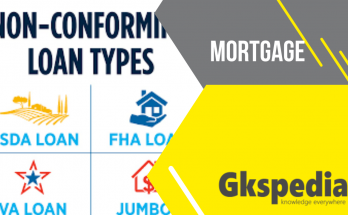Introduction: In the ever-evolving landscape of homeownership, the ability to adapt your mortgage to changing circumstances is a valuable financial skill. If you’re currently holding an FHA loan and are contemplating a shift to a conventional loan, you’ve come to the right place. Transitioning from an FHA to a Conventional Loan can open up new possibilities for your homeownership journey. In this comprehensive guide, we will walk you through the nuances of making this transition, exploring the advantages, considerations, and the step-by-step process involved. Join us as we unravel the path to greater financial flexibility and take the first step towards securing your home with a Conventional Loan.
Refinance an FHA loan into a conventional loan
You may be questioning whether it is even possible to refinance from an FHA loan to a conventional loan before comparing conventional loan rates.
If you meet the requirements for conventional loan approval, then yes, you can. A minimum credit score of 620 and a maximum debt-to-income (DTI) ratio of 43% are often part of these requirements. There are more usual needs as well, such as documentation of your salary and loan repayment capacity.
When is it a good time to refinance an FHA loan to a conventional loan?
Just because you’ve been approved for a new loan doesn’t mean you need to refinance. Here are some examples where switching from FHA to traditional mortgages might make sense:
Since applying for an FHA loan, my credit score has improved significantly. Let’s assume that when you obtained your first loan, your credit score was 600. Four years later, it is now 670. This is a big difference that will help you qualify for a cheaper loan. Interest rates have fallen significantly. For example, if he is paying 5.1% on his current loan and can get a new interest rate of 4%, this could be a significant saving over the life of the loan. Compare when you applied and the current market and use Bankrate’s refinancing calculator to estimate your savings at a lower interest rate.
They will stay there long enough to recoup your closing costs. If you have no plans to move in the future and your current loan is still running for a long time, a traditional debt restructuring would be a wise decision There is a possibility. However, if you plan to move in the next few years, refinancing may not be recommended as you may not have enough time to reach a break-even point when your savings exceed the initial cost of taking out a new loan.
What Is a Conventional Loan?
A conventional loan is a mortgage that is not insured by a federal agency like the FHA. Traditional loans often have stricter requirements compared to FHA loans because they offer no guarantee to the lender that the loan will be repaid. Despite this, the majority of homebuyers are using traditional credit to purchase their homes. In 2020, 69% of new homes were sold financed with traditional credit.
Generally, if you’re interested in traditional credit, you’ll need to deposit a minimum of 3% and have a minimum credit score of 620. The more you can afford, the better your mortgage terms will be. The higher the credit score of a person, the lower the interest rate. You can get conventional credit with a lower credit rating, but many lenders offer the best interest rates for those with scores above her 700.
You may have heard the traditional advice to reduce the value of your home by at least 20% when applying for a traditional mortgage. As a general rule, with at least a 20% down payment, there are no monthly payments for private mortgage insurance. If the buyer deposits less than 20%, they are usually responsible for paying personal mortgage insurance premiums each month. The size of the premium depends on the value of the home compared to the size of the loan and the creditworthiness of the individual. Once her LTV on the mortgage reaches 80% of his, you can ask the lender to cancel the mortgage insurance. When the LTV reaches 78% of his, the lender must automatically release the mortgage insurance.
How Do FHA Loans Work?
The federal government does not create FHA loans, but insures them. This means that if a borrower has trouble paying or defaulting on their mortgage, the lender can file a claim with her FHA. After the lender forecloses on the buyer’s home, the FHA pays the lender the balance of the loan. Lenders are more than willing to lend money to people who may be deemed too risky for a mortgage because they know they are likely to be paid no matter what.
However, FHA guarantees come at a cost, usually borne by the borrower. The first is an advance mortgage insurance premium, typically around 1.75% of the loan amount. You will pay this amount at the end of the course.
The second form of mortgage insurance pays monthly premiums ranging from 0.45% to 1.25% of principal. Monthly insurance payments typically last for the life of the loan and can add hundreds of dollars to an individual’s monthly mortgage payments.
FHA Loan To Conventional Loan
This is one of the most popular refinancing options when it comes to FHA loans for those looking to avoid mortgage insurance altogether. Once you hit 20% home equity, nothing but personal mortgage insurance (PMI) is a great incentive to refinance.
Additionally, traditional mortgages often have lower interest rates, especially depending on your credit rating and stocks.
To be eligible to transfer from an FHA loan to a traditional loan, you must have a debt-to-income ratio (DTI) of approximately 43% or less to maximize your chances of approval. You must also have an average credit score of 620 or higher. The FHA is a bit more generous, so the credit requirement could be a downside for some.
FHA Cash-Out Refinance
You can refinance your payments through the FHA, but financially it may not be your best option. This is because you need 20% home equity after you withdraw cash from your home.
Cashing out a refinance on a traditional loan is generally a better option because it avoids current and future mortgage insurance premium (MIP) payments.
However, if you’ve come across a large unexpected expense and you’re still working to improve your credit score, a new FHA loan may be your best bet.
Generally, you must have a credit score of at least 620 average to be eligible for FHA cashout refinancing with Rocket Mortgage®. The exception is if you are a current customer trying to settle your debt at closing. In this case, the qualifying credit score is 580. Also, you must have at least 20% stake in the house after withdrawal.
The main advantage here is that he may be able to avail his FHA loan with a higher DTI (up to 67% in some cases) than a traditional mortgage, depending on various other factors.
FHA Streamline Refinance
FHA Streamline is used when transitioning from one FHA loan to another. This is only used for installments/periodic refinancing. H. You can lower the rate or change the period, but you cannot withdraw the funds. However, those who qualify have some significant benefits.
Low MIP: With FHA rationalization, her MIP upfront is only 0.01% of the loan amount, and MIP drops to 0.55% regardless of loan amount or equity on hand. This can mean big savings on a monthly basis.
Less paperwork: In some cases, you need less paperwork because you’ve paid off your loan. Makes it easier to verify your income and assets.
Evaluation is often unnecessary: With FHA Streamline, evaluation may not be necessary. This means that the closing table may be reached sooner.
FHA Streamline has no minimum capital requirements. To be eligible, a client served by Rocket Mortgage must have a FICO® score of 580 or higher. Clients not currently on Rocket Mortgage should have a median credit rating of 620.
Benefits of refinancing an FHA loan to a conventional loan
A major advantage of refinancing an FHA loan to a traditional loan is that it is one of the only ways to get rid of FHA mortgage insurance.
With traditional loans, you can cancel your Personal Mortgage Insurance (PMI) once your balance reaches 80% of the home’s original value. In most cases, this option is not available on his FHA loan, so unless you refinance to another type of loan, you will have to pay the premium.
If, after refinancing the FHA loan to a conventional loan, he still has to pay for mortgage insurance because of the stock, he may find that the premiums are higher than the cost of his FHA loan. However, refinancing can reduce your monthly payments enough, and the trade-off is that you can eventually cancel his PMI for traditional loans.
According to statistics from the Urban Institute, conventional PMI ranges from 0.58 percent to 1.85 percent. FHA MIP is 0.75 percent upfront and ranges from 0.45 percent to 1.05 percent annually.
The ability to access up to 80% of your home’s equity through a cash-out refinance with a normal mortgage and avoid paying mortgage insurance is another advantage of switching from an FHA loan to a conventional loan. Additionally, compared to an FHA loan, conventional loans offer higher loan ceilings, allowing you to borrow more money.
Cons of refinancing from FHA to conventional
Traditional refinancing rates tend to be lower than FHA refinancing rates, but that’s not all when switching to this new type of loan. Consider the following cons:
You may have been paying your mortgage insurance for some time. These PMI payments are still adding up, so ask your lender for a premium estimate if you haven’t hit the 80% mark yet.
You have to pay closing costs. Refinancing is not cheap. You have to pay closing costs that add up to thousands of dollars. Depending on your lender, you may be able to match these costs with your loan, but you end up paying more interest.
You will have to go through the entire credit process again. Remember all the work you had to do to get your first loan approved? Get ready to start over. A traditional refinance involves a lot of paperwork and a lot of back and forth with the lender. Also, it won’t be done overnight. Some lenders may take him 45 days or more to complete a refinance application.
Alternative FHA loan refinancing
Traditional refinancing rates tend to be lower than FHA refinancing rates, but that’s not all when switching to this new type of loan. Consider the following cons:
If refinancing your FHA loan to a traditional loan isn’t right for you, you can still take advantage of lower interest rates with FHA’s streamlined refinancing. This program provides a fast way to refinance FHA loans because it waives more stringent underwriting reviews, including B. The need to verify or assess your income and creditworthiness.
To qualify for the FHA streamlined refinancing, you must meet the following requirements:
I have an FHA loan.
You have paid and your loan is in good standing (not in arrears). Refinancing provides the following “tangible net benefits”: For example, reducing your monthly payments or switching from a variable rate loan to a fixed rate loan.
I don’t want to withdraw more than $500.




